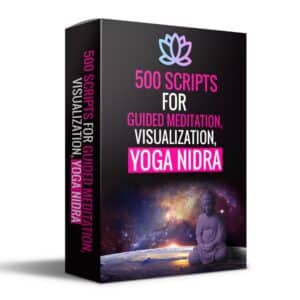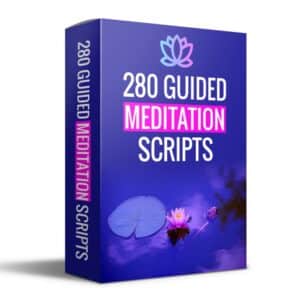Introduction to Mindfulness and Overthinking
Mindfulness is the practice of being fully present and engaged in the moment, aware of your thoughts and emotions without judgment. This can be incredibly beneficial for combating overthinking, a common issue where one gets caught in a loop of repetitive, often negative or anxious thoughts.
Benefits of Mindfulness for Overthinking
- Increased Awareness: Mindfulness helps you become more aware of your thought patterns, particularly the tendency to overthink.
- Reduced Stress: By focusing on the present, mindfulness reduces the stress and anxiety that often fuel overthinking.
- Improved Focus: Mindfulness trains you to redirect your focus from repetitive thoughts to the present moment.
- Enhanced Decision-Making: With a clearer mind, you can make decisions more effectively, without the paralyzing effects of overthinking.
Mindfulness Exercises for Managing Overthinking
1. Mindful Breathing
Purpose: To ground yourself in the present and interrupt the cycle of overthinking.
Instructions:
- Sit or lie down in a comfortable position.
- Close your eyes and focus on your breath, noticing the rise and fall of your chest or the sensation of air at your nostrils.
- When you notice your mind wandering into repetitive thoughts, gently acknowledge this and return your focus to your breath.
- Practice for 5-10 minutes daily, gradually increasing as you feel comfortable.
2. Observing Thoughts Exercise
Purpose: To create a space between you and your thoughts, allowing you to observe them without getting caught up.
Instructions:
- Find a quiet place to sit comfortably.
- Close your eyes and take a few deep breaths to settle your mind.
- Observe your thoughts as if they were clouds passing in the sky, neither attaching to them nor pushing them away.
- When you find yourself getting tangled in a thought, gently bring your attention back to your breath.
3. Sensory Grounding Exercise
Purpose: To shift your focus from overthinking to the present moment through your senses.
Instructions:
- Notice 5 things you can see, 4 things you can touch, 3 things you can hear, 2 things you can smell, and 1 thing you can taste.
- Really focus on these sensations, experiencing them fully and allowing your mind to take a break from overthinking.
4. Body Scan Meditation
Purpose: To connect with your body and release the physical tension associated with overthinking.
Instructions:
- Lie down or sit in a chair, close your eyes, and breathe deeply.
- Starting at your feet and working up to your head, notice any sensations in each part of your body.
- If your mind starts to wander into thoughts, acknowledge this and gently redirect your attention back to the part of the body you were focusing on.
Tips for Incorporating Mindfulness into Daily Life
- Start Small: Begin with short, daily sessions and gradually increase the duration as you become more comfortable with the practice.
- Create a Routine: Integrating mindfulness into your daily routine can help make it a habit, reducing your propensity to overthink.
- Use Mindful Reminders: Set alarms or notifications to remind you to take mindful breaks throughout the day, especially during times you’re prone to overthink.
- Apply Mindfulness in Activities: Try to perform daily tasks like eating, walking, or cleaning with full attention to your senses and actions, staying present and curbing overthinking.
Conclusion
Mindfulness is a valuable tool for managing overthinking, providing a way to observe and detach from repetitive thoughts. With regular practice, you can enhance your ability to remain present, reduce stress, and improve your overall mental well-being. Remember, the goal is not to eliminate thoughts but to change your relationship with them, allowing you to live more freely and fully in the moment.
Discover the transformative power of mindfulness with our carefully curated collection of printable mindfulness worksheets and exercises. Each worksheet is designed to guide you through exercises that cultivate awareness, reduce stress, and promote emotional well-being. From grounding techniques to breathing exercises, these tools are your allies in navigating the complexities of daily life with a sense of calm and presence. Whether you’re a beginner or looking to deepen your practice, these printable resources are tailored to meet your needs.
Save up to 88% with our Bundles
Instant Download
- Digital Download
- Digital file type(s): 1x PDF
- Your files will be available to download once payment is confirmed

![Printable Mindfulness Worksheet & Exercises for Managing Overthinking [PDF]](https://guidedmeditationscript.com/wp-content/uploads/2024/03/Printable-Mindfulness-Worksheet-Exercises-for-Managing-Overthinking-PDF.jpg)
![Printable Mindfulness Worksheet & Exercises for Managing Obsessive Thoughts [PDF]](https://guidedmeditationscript.com/wp-content/uploads/2024/03/Printable-Mindfulness-Worksheet-Exercises-for-Managing-Obsessive-Thoughts-PDF-300x150.jpg)
![Printable Mindfulness Worksheet & Exercises for Prisoners [PDF]](https://guidedmeditationscript.com/wp-content/uploads/2024/03/Printable-Mindfulness-Worksheet-Exercises-for-Prisoners-PDF-300x150.jpg)
![15,000 Positive Affirmations Bundle [PDF]](https://guidedmeditationscript.com/wp-content/uploads/2024/01/15000-Positive-Affirmations-Bundle-PDF-1-300x300.webp)

![150 Best Hypnosis Scripts [PDF] Bundle](https://guidedmeditationscript.com/wp-content/uploads/2023/11/150-Best-Hypnosis-Scripts-PDF-Bundle-300x300.jpg)

![200 Printable Mindfulness Exercises Worksheets Bundle [PDF]](https://guidedmeditationscript.com/wp-content/uploads/2024/02/200-Printable-Mindfulness-Exercises-Worksheets-Bundle-PDF-300x300.jpg)


![Printable Mindfulness Worksheet & Exercises for Mindfulness of Emotions [PDF]](https://guidedmeditationscript.com/wp-content/uploads/2024/02/Printable-Mindfulness-Worksheet-Exercises-for-Mindfulness-of-Emotions-PDF-300x150.jpg)
![Printable Mindfulness Worksheet & Exercises for Emotional Grounding [PDF]](https://guidedmeditationscript.com/wp-content/uploads/2024/02/Printable-Mindfulness-Worksheet-Exercises-for-Emotional-Grounding-PDF-300x150.jpg)
